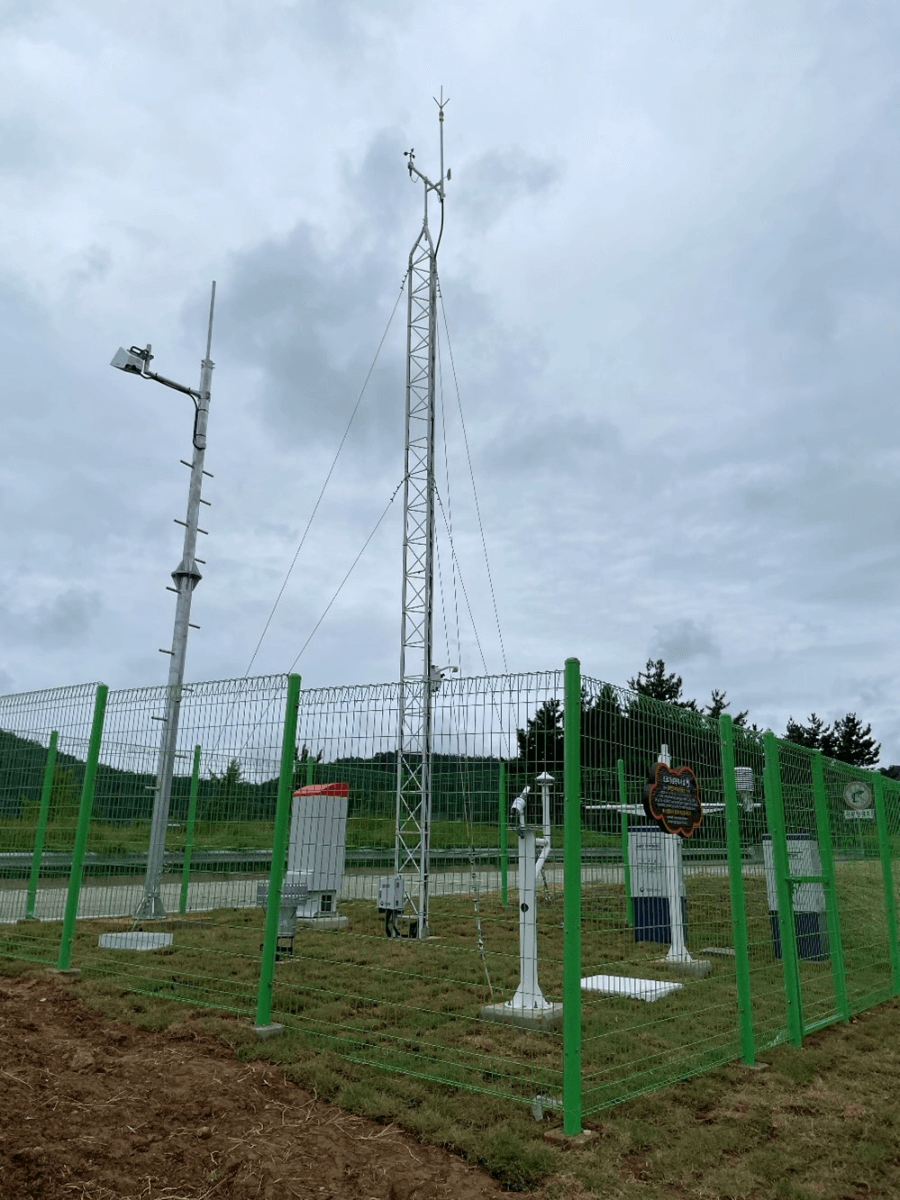Black ice stands as one of the most formidable hazards on the road. In a proactive approach to mitigate this risk on its mountainous highways, South Korea is integrating Artificial Intelligence (AI) into Road Weather Information Systems (RWIS) to enhance safety measures.
Throughout Korea, highways are influenced by topography and altitude, making it challenging to assess road conditions using conventional weather forecasts. In the wintertime, temperatures can drop suddenly overnight causing black ice to form and lead to major accidents. In 2019 alone, there was a highway collision on the Seohaean Expressway involving 50 vehicles that resulted in 32 injuries and 7 fatalities. Due to the elevated risk of these roadways, the Korean government knew they needed to take action to improve safety.
Forecasting Black Ice
In the past, the Korea Meteorological Institute (KMI) has implemented measures such as automatic salt spreading on sections prone to black ice and displaying warnings on large LED signs to mitigate the dangers. However, there was no fundamental system to discern the occurrence of black ice. Through a exploratory test review process, the institute discovered that OTT HydroMet’s Road Weather Information Systems (RWIS), specifically integrating the Lufft Non-Invasive Road Sensor (NIRS), presented an optimal solution to address this issue.

The chosen system provides officials with real-time data on weather and road conditions by combining just two OTT HydroMet sensors. The Lufft NIRS31, a non-invasive sensor observes the layer thickness of water, snow, and ice, surface conditions (dry, damp, wet, snow, ice), friction, road surface temperature, and saline concentration on the highway. The road sensor is paired with the Lufft WS500, a compact weather sensor, to measure air temperature, humidity, wind direction, wind speed, and atmospheric pressure. Paired together, the data results in a comprehensive view of conditions on the highway. Over the past two years, 31 systems have been installed along the Seohaean Expressway in Korea, which spans 345 km from Seoul to Mokpo. In 2024, an additional 140 road surface sensors will be installed with a plan to have 500 sites across Korean roadways up and running by 2025. OTT HydroMet, manufacturer and designer of the product brand Lufft, in collaboration with channel partner B&P Instruments will continue to provide advanced systems and technical support as the network grows.
"We are currently installing and operating the NIRS31 optical road sensor from Lufft on the Jungbu (Central) Expressway and the Seohaean Expressway in South Korea to prevent traffic accidents caused by road ice. We are providing optical road sensor observation data to Korea Expressway Corporation and domestic navigation companies for the safety of drivers, and we plan to expand this to all expressways nationwide in the future."
- Siu Jeong, Project Manager, Korea Meteorological Institute
Integrating Artificial Intelligence
The newly applied monitoring network, utilizing OTT HydroMet technology, analyzes over 10 weather parameters. Special forecasting technology has been developed using Artificial Intelligence (AI) to transform the data to predict black ice occurrence on roads and just how slippery the road will be. Based on this information, the system categorizes road conditions into three levels: observe, caution, and alert, providing drivers with notifications one hour in advance. In cases where AI predicts black ice, an automatic salt-spreading project is also in development to ensure efficient and timely spreading. The forecasting technology is expected to be integrated into the navigation systems of most vehicles used by Koreans to ensure drivers are aware of dangerous road conditions.
Ensuring Safety Throughout Korea
The adoption of advanced Road Weather Information Systems (RWIS) represents a crucial step in enhancing safety along Korea’s mountainous highways. Real-time data from sensors like the Lufft NIRS and WS500 enables authorities to proactively address the threat of black ice, reducing the risk of accidents. With the integration of Artificial Intelligence (AI) for predictive analysis, road conditions can be categorized and communicated to drivers well in advance, ensuring heightened awareness and safer journeys.
Further reading & listening
Interested in learning more about advanced Road Weather Information Systems? Reach out to our team!




